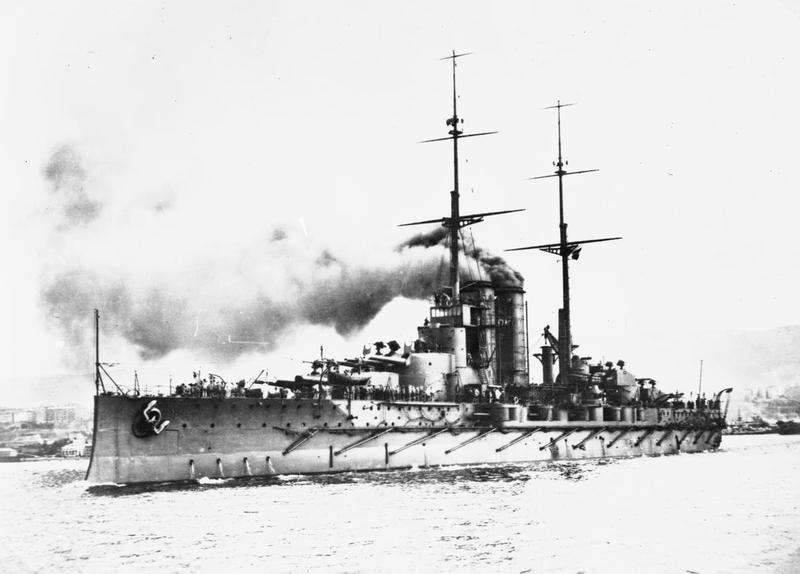These were Škoda guns built at the Pilsen works. Fitted to Austria-Hungary's last pre-dreadnoughts and to her only completed dreadnoughts. Used a horizontal wedge breech. Unlike German guns of this caliber, there was no "fore charge" used in these weapons, all the propellant charge was in a single brass case.
The Škoda Works of Pilsen produced a total of 65 guns (5 of them were spares) in this caliber. The first 13 were for the Radetzky class and the second 52 were for the Tegetthoff class (also known as the Viribus Unitis class). Only the second series, the guns for the Tegetthoff class, were designated as K10. The K10 differed slightly from the earlier 30.5 cm (12") guns in that its chamber was 1.97 inches (5 cm) longer, which allowed these guns to use a heavier propellant charge.
Radetzky, Erzherog Franz Ferdinand, Zrínyi and Tegetthoff were ceded after World War I to Italy, where they were scrapped and their guns then used as coastal artillery
Nomenclature note: The lengths of these guns were identical, the differences as noted in their designations was strictly the result of the way that each nation measured barrel length. See "Definitions and Information about Naval Guns" for further details.
The data that follows is for these guns while in Austria-Hungary service unless otherwise noted.
Actual bore diameter was 30.50 cm (12.008 inches).
| Designation | 30.5 cm/45 (12")
30.5 cm/45 (12") K10 |
|---|---|
| Ship Class Used On | Austria-Hungary
30.5 cm/45 (12") - Radetzky class 30.5 cm/45 (12") K10 - Tegetthoff class Italy
|
| Date Of Design | 1908 |
| Date In Service | 1910 |
| Gun Weight | 116,070 lbs. (52,650 kg)
119,600 lbs. (54,250 kg) including BM |
| Gun Length oa | 541 in (13.750 m) |
| Bore Length | about 512 in (13.000 m) |
| Rifling Length | 417.6 in (10.606 m) |
| Grooves | (92) 0.115 in deep x 0.271 in (2.92 mm x 6.9 mm) |
| Lands | 0.138 in (3.5 mm) |
| Twist | RH 1 in 25 |
| Chamber Volume | N/A |
| Rate Of Fire | 3 rounds in first minute with ready ammunition, 1 to 2 rounds per minute afterwards |
| Type | Separate |
|---|---|
| Projectile Types and Weights 1 | Austria-Hungary 2 APC L/3,4 (2crh): 992 lbs. (450 kg) 3 4 SAPC L/4,0: 992 lbs. (450 kg) |
| Bursting Charge 5 | APC: 8.8 lbs. (4.0 kg) TNT
SAPC: 58.9 lbs. (26.7 kg) TNT |
| Projectile Length | APC L/3,4: 40.8 in (103.6 cm)
SAPC L/4,0: 48.4 in (122.9 cm) 6 |
| Propellant Charge 7 | Non-K10 full charge: 302.0 to 308.6 lbs. (137 to 140 kg) 25/660 mm M97f R.P.
Non-K10 reduced charge: 152.1 lbs (69 kg) 21/700 mm M.97a dw. R.P. K10 full charge: about 313.1 to 319.7 lbs. (142 to 145 kg) (unknown grain size) M97h R.P. 8 |
| Cartridge Case Type, Size and Empty Weight | Non-K10: Brass, 305 x 1,400 mm, 152.8 lbs. (69.3 kg) 9 K10: Brass, N/A, N/A 9 |
| Muzzle Velocity | Austria-Hungary
2,625 fps (800 mps) Italy
|
| Working Pressure | 18.4 tons/in2 (2,900 kg/cm2) |
| Approximate Barrel Life | 200 rounds |
| Ammunition stowage per gun | Radetzky: 75 - 76 rounds 11 Viribus Unitis: 82 rounds 12 |
- ^
Actual designations for Austro-Hungarian Projectiles APC L/3,4 (2crh) 30,5 cm Panzergranate L/3,4 SAPC L/4,0 30,5 cm Zündergranate L/4,0
These shells were sometimes called "bekappte Panzergranate" (AP shell with AP Cap) and "bekappte Zündergranate" (SAPC shell with AP Cap). - ^The Italians found many projectiles for these guns in the city of Pola when they occupied it after the war. It seems unlikely that they ever produced their own projectiles.
- ^The original APC L/3,4 projectiles for these guns had a rather blunt AP cap (2crh) but no ballistic cap. About 1910 the Navy purchased licenses from the British firm of Firth and Sons, Limited, for manufacturing AP caps and ballistic caps. In 1912-13 the Navy started refitting existing projectiles with new AP caps and 4.5crh ballistic caps. These rebuilt projectiles were about 42.5 in (108.0 cm) long, which was the maximum length that the hoists on the Radetzky class could handle. The hoists on the later Tegetthoff class could accommodate longer shells, and the projectiles for these ships were accordingly given 5crh ballistic caps which made their overall length about 44.7 in (113.6 cm). It is probable that both the 4.5crh and the 5crh projectiles used the same shell body and AP cap with the only difference between them being the length of the ballistic cap. Measurements made by András Hatala of incomplete APC shell bodies located at the Museum of Military History in Budapest and on estimates based upon war-time photographs of completed projectiles were used by him to create the projectile sketch below. Based upon notes in the Italian section of "Naval Weapons of World War Two," I estimate that the APC projectiles with 4.5crh caps weighed about 996 lbs. (452 kg) and those with 5crh caps weighed about 1001 lbs. (454 kg).
- ^Based upon business correspondence between the Witkowitz Iron and Steel Works in Moravia and the Manfréd Weiss Iron and Steel Works in Hungary, there were at least three versions of the 30,5 cm Panzergranate, but details are lacking.
- ^Amatol was substituted for TNT during the war.
- ^SAPC projectiles were originally made without a ballistic cap. The ballistic cap that was added later was based upon the purchased Firth and Sons, Limited patents and was similar to those added to the APC projectiles. Projectiles with the new ballistic cap (now SAPCBC) entered service about 1912-1913 and would have increased the the shell weight by about 1 kg (2 lbs.). Measurements of an existing SAPC shell with a ballistic cap by Marco Zelaschi found that its overall length was about 52.4 in (133.0 cm)
- ^Unlike German guns of this caliber, all of the propellant for these Škoda guns was in a single brass cartridge.
- ^When these guns first entered service, propellants for them were made from M97f. A new propellant formulation, M97h, was introduced shortly before the start of the war which was cooler burning and produced less smoke. This was the formulation most likely used for the K10 gun during the war but searches of the official records have not turned up the "Unterricht" specification for the 30.5 cm K10 gun which would have defined the propellant grain type, size and weight for this gun. For this reason, the values given above for the K10 propellant weight is an estimate based upon other official documents.
- ^The MV for Italian service comes from a wartime German document. This reduction from Austro-Hungarian MV might have been the result of the use of Italian propellant in place of the original Austro-Hungarian propellant.
- ^Outfit for the Radetzky class was 38 AP and 38 SAPC per gun. Nine projectiles were stored in the rear of each gunhouse, which also helped to balance the turret. There was actually space in the mounting for about 90 rounds, but they never carried this many. A Note on Sources: Friedman in "Naval Weapons of World War One" says 84 rounds per gun were carried but this seems to have double counted the ready rounds.
- ^Outfit for Tegetthoff class was 38 AP and 38 SAPC per gun in magazines plus another six rounds per gun (18 total) in the in the rear of each gunhouse, which also helped to balance the turret. There was actually space in the mounting for about 100 rounds, but they never carried this many.
- No guns survive, but there are multiple surviving projectiles. Two 30.5 cm AP shell bodies are on display in the yard of the Military History Institute and Museum, Budapest. These are incomplete APC projectiles which lack AP caps and windshields, consisting of only the cast steel body. There is also a SAPC projectile on display at the Museum of Military History, Vienna. There are two 30.5 cm projectiles, type unknown, that are said to be from Viribus Unitis at the Museo Nazionale Scienza e Tecnologia Leonardo da Vinci in central Milan, Italy. Finally, there is a SAPCBC projectile at Trieste, also said to be from Viribus Unitis. See photographs below.
| Elevation | 992 lbs. (450 kg) AP 2crh Shell | 1,001 lbs. (454 kg) APC 5crh Shell |
|---|---|---|
| 3.3 degrees | --- | 6,560 yards (6,000 m) |
| 6.0 degrees | --- | 10,930 yards (10,000 m) |
| 16.0 degrees | 17,830 yards (16,300 m) | 20,890 yards (19,100 m) |
| 20 degrees | 19,900 yards (18,200 m) | about 24,000 yards (22,000 m) |
- Official range tables for the 30.5 cm shells went up to 15,000 m (16,400 yards).
- When the Radetzky class switched from 2crh to 4.5crh projectiles their range increased from 18,500 meters (20,230 yards) up to 22,000 meters (24,060 yards).
| Range | APC L/3,4 KC Armor |
APC w/5crh ballistic cap KC Armor |
|---|---|---|
| 6,560 yards (6,000 m) | --- | 18.7 in (475 mm) |
| 10,940 yards (10,000 m) | --- | 10.7 in (272 mm) |
| 17,830 yards (16,300 m) | 5.4 in (136 mm) | --- |
| 19,900 yards (18,200 m) | 4.2 in (106 mm) | --- |
| 20,890 yards (19,100 m) | --- | 6.8 in (173 mm) |
Data is from "Naval Weapons of World War One."
| Range | APC L/3,4 KC Armor |
APC w/5crh ballistic cap KC Armor |
|---|---|---|
| 5,470 yards (5,000 m) | 17.1 in (433 mm) | 19.8 in (502 mm) |
| 10,940 yards (10,000 m) | 8.0 in (202 mm) | 10.7 in (273 mm) |
| 16,400 yards (15,000 m) | 5.6 in (143 mm) | 8.2 in (208 mm) |
Data is from "Austro-Hungarian Battleships and Battleship Designs: 1904-1914."
The acceptance requirement for the Zündergranate L/4,0 (SAPC) was to be able to penetrate a 180 mm (7") KC plate at a striking velocity of 540 mps (1,770 fps), equivalent to a range of 8,000 m (8,750 yards). Data is from "Austro-Hungarian Battleships and Battleship Designs: 1904-1914."
| Designation | Two-gun Turrets
Radetzky (2) Three-gun Turrets
|
|---|---|
| Weight 2b 3b | Two-gun Turrets: 432 tons (439 mt)
Three-gun Turrets: 669-679 tons (680-690 mt) |
| Elevation 4b | Radetzky: -4 / +20 degrees
Tegetthoff: -4 / +20 degrees |
| Elevation Rate | 2.5 degrees per second |
| Train | +140 / -140 degrees |
| Train Rate | 3 degrees per second |
| Gun recoil | 33.5 inches (85 cm) |
| Loading Angle | +2 degrees |
- ^On the Tegetthoff class the heavy weight of the superimposed turrets caused hull distortions, requiring stiffening of the longitudinal frames.
- ^The superimposed triple turrets were heavier than the lower turrets. Weights of individual turrets all differed slightly. For example, Turret III on Prinz Eugen was 687 tons.
- ^Some references quote triple turret weights of 616-619 tons (626-629 mt). These are taken from the Škoda plans of October 1909 that used 25 cm turret armor. The actual turrets had 28 cm armor and were consequently much heavier.
- ^The Radetzky class could elevate all guns to 20 degrees either individually or when coupled together. The Tegetthoff class were able to elevate all guns individually to -4 / +20 degrees, but when the guns were later equipped to be coupled together, the elevation range was limited to -4 / +16 degrees.
- These turrets were poorly protected with thin armor. There was an unprotected slot between the gunhouse and the barbette - see sketch below. The cupolas for the rangefinders on the turret roofs were overly large. A hit on one of these could have peeled back the thin turret roof armor.
- Many sources state that under battle conditions the gun houses could not be ventilated as the ventilation system sucked in the propellant gasses rather than expelling them. Some of these sources state that shutting down the ventilation would make the turrets uninhabitable after no more than 15 minutes. Recent research by Mihály Krámli throws doubt on these statements and says that the fresh air supplied by the ventilation system was probably adequate.
- Projectiles were stored nose-down hanging by chains from the shell room overhead.
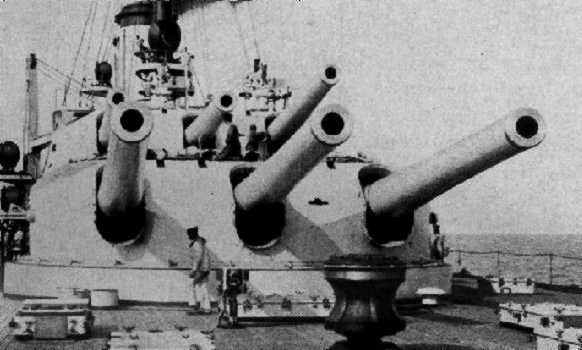
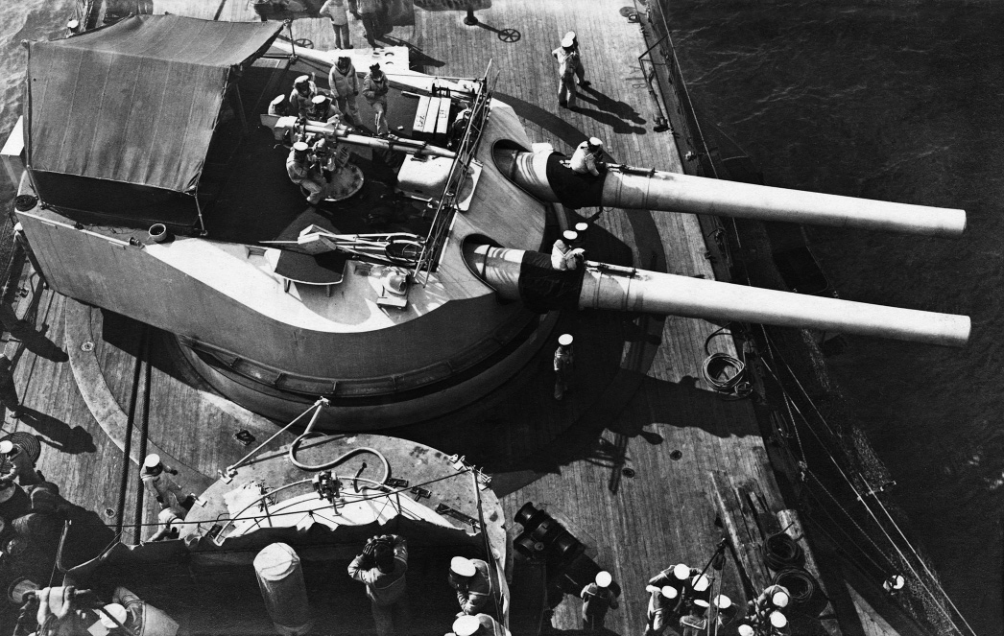
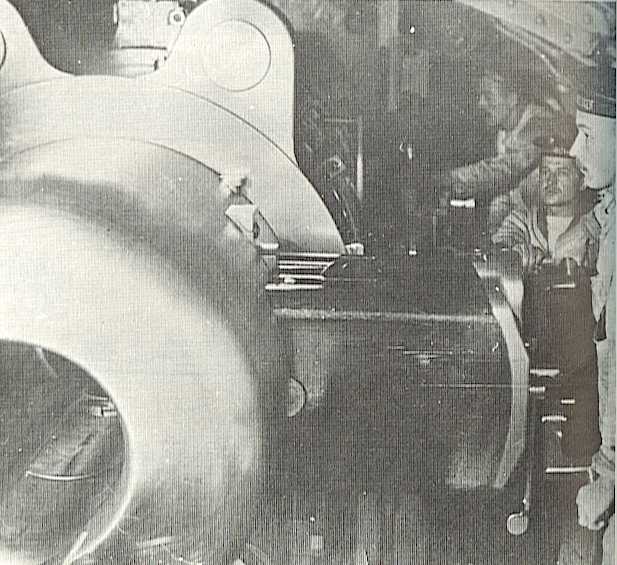
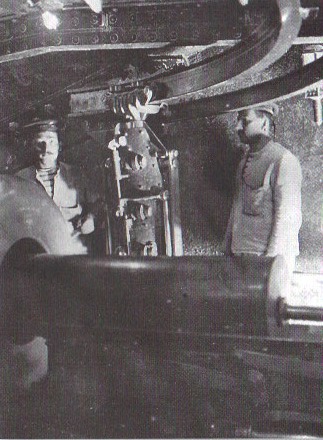
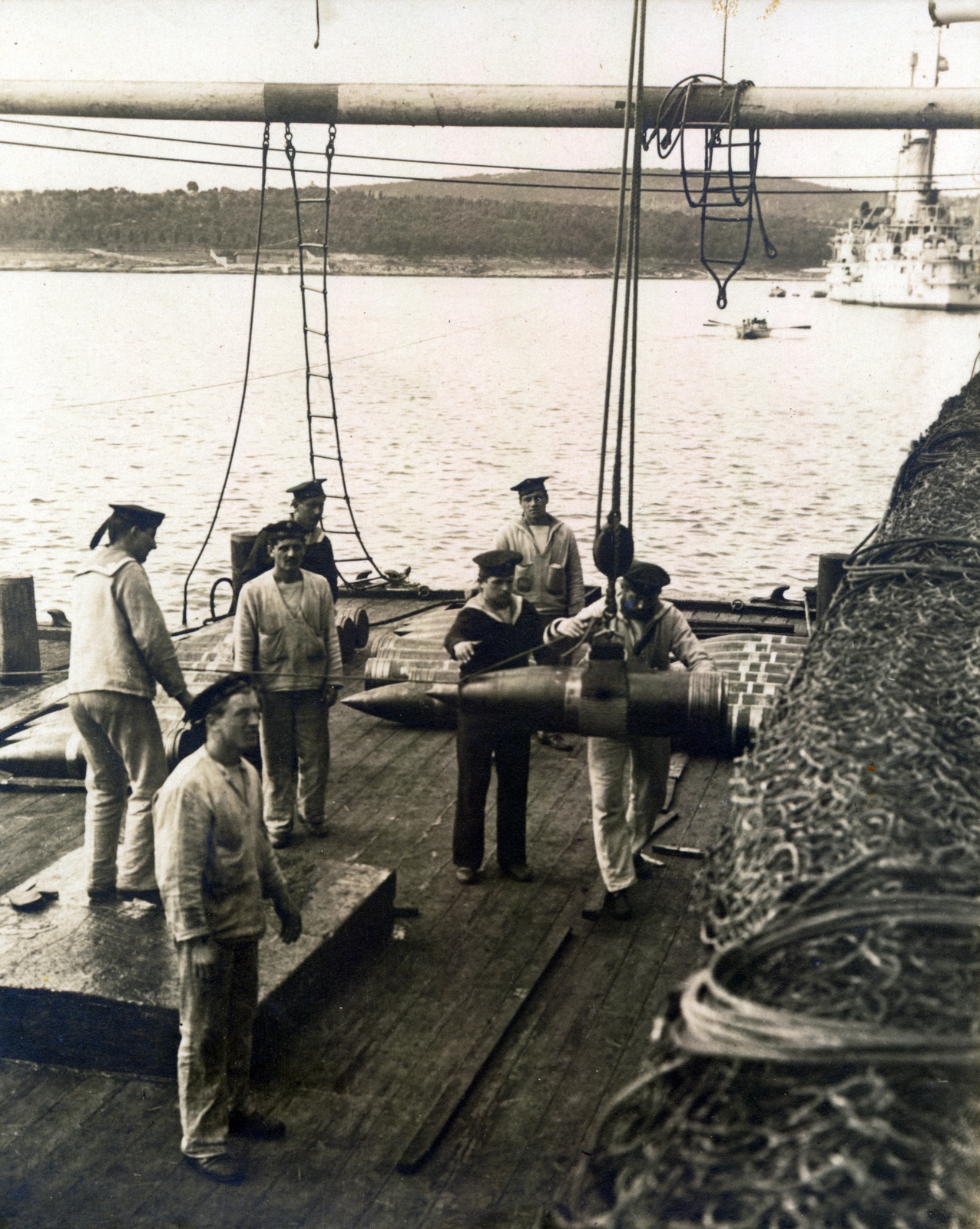
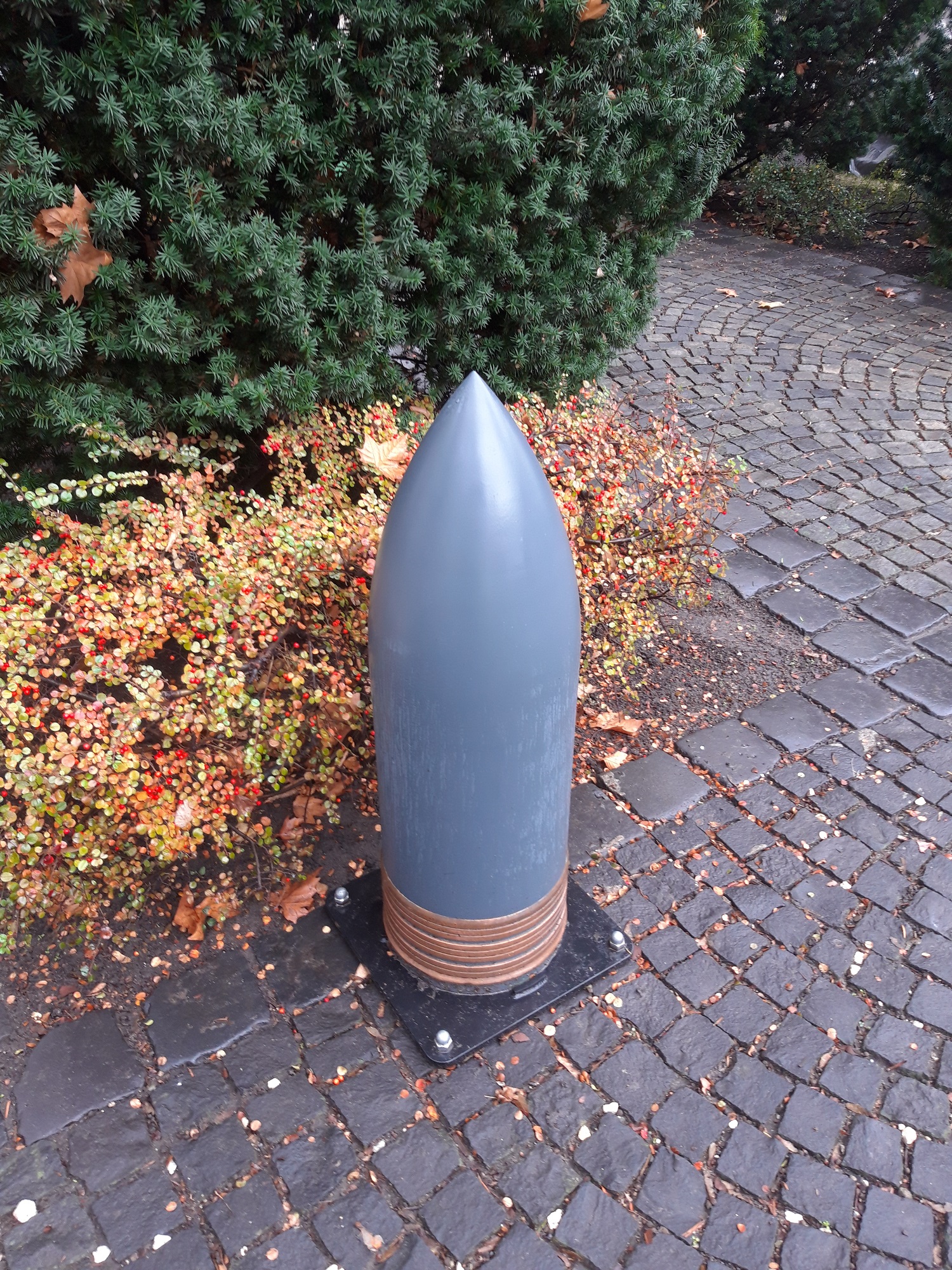
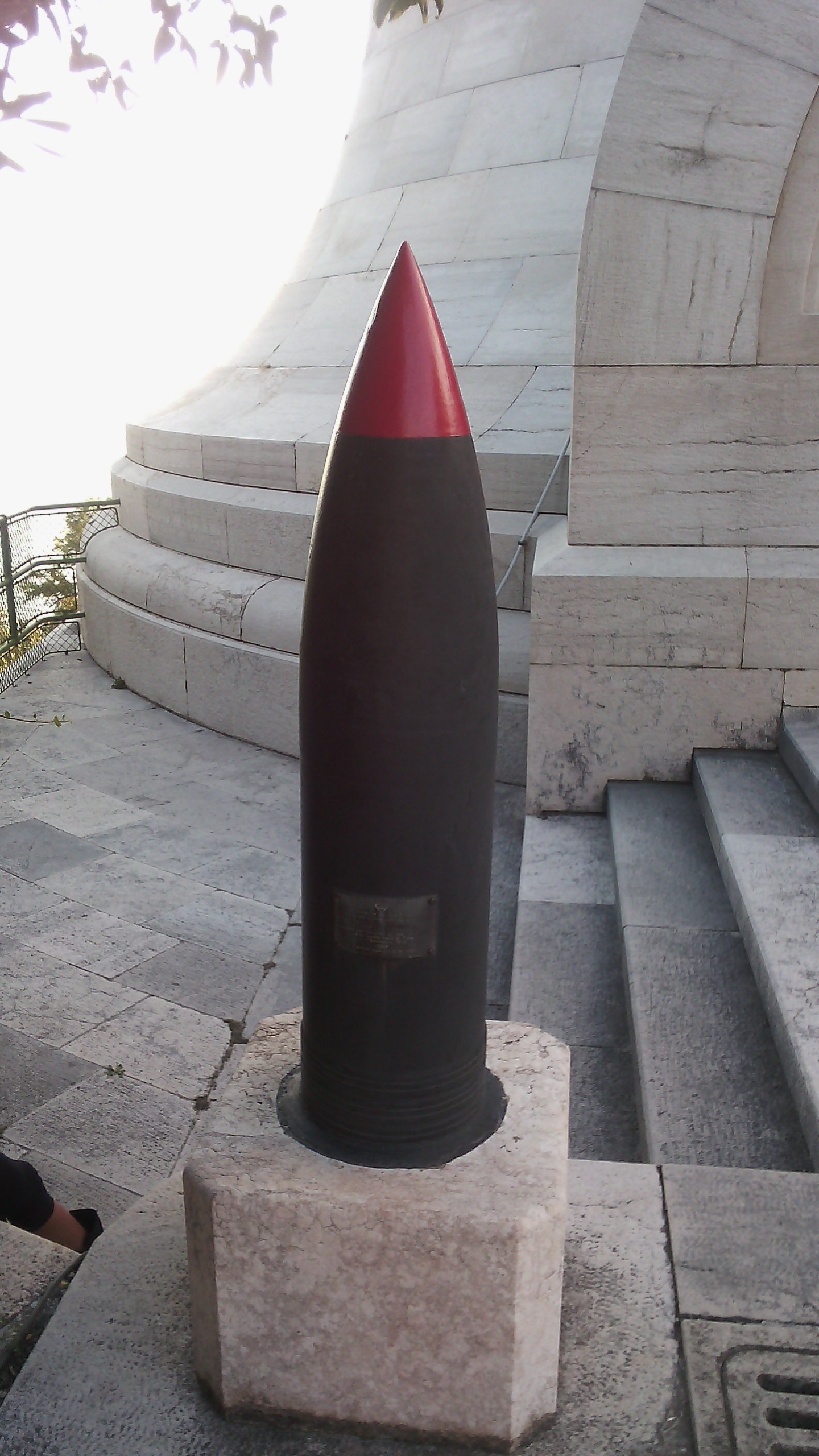
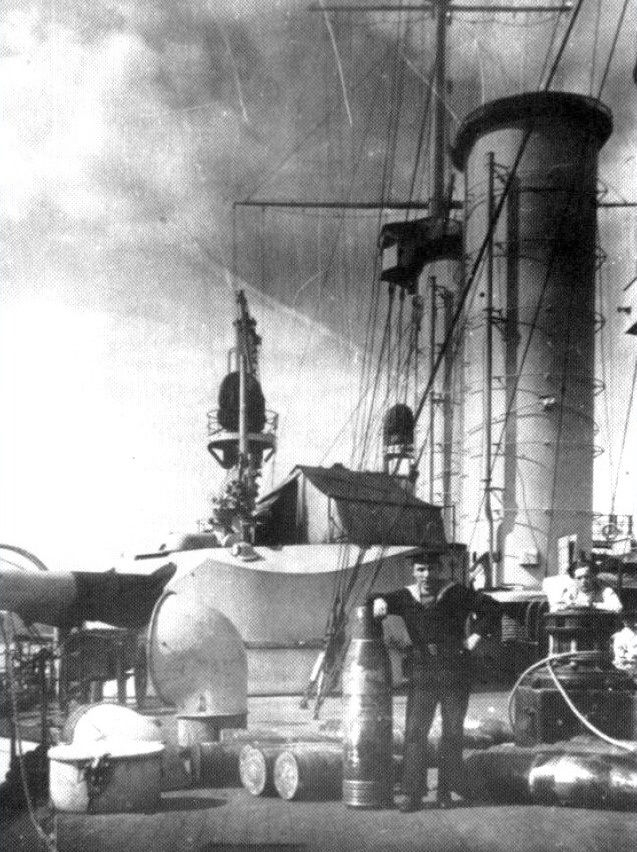
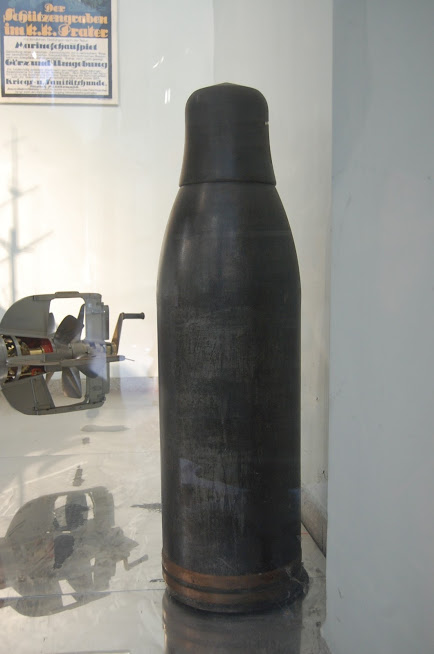
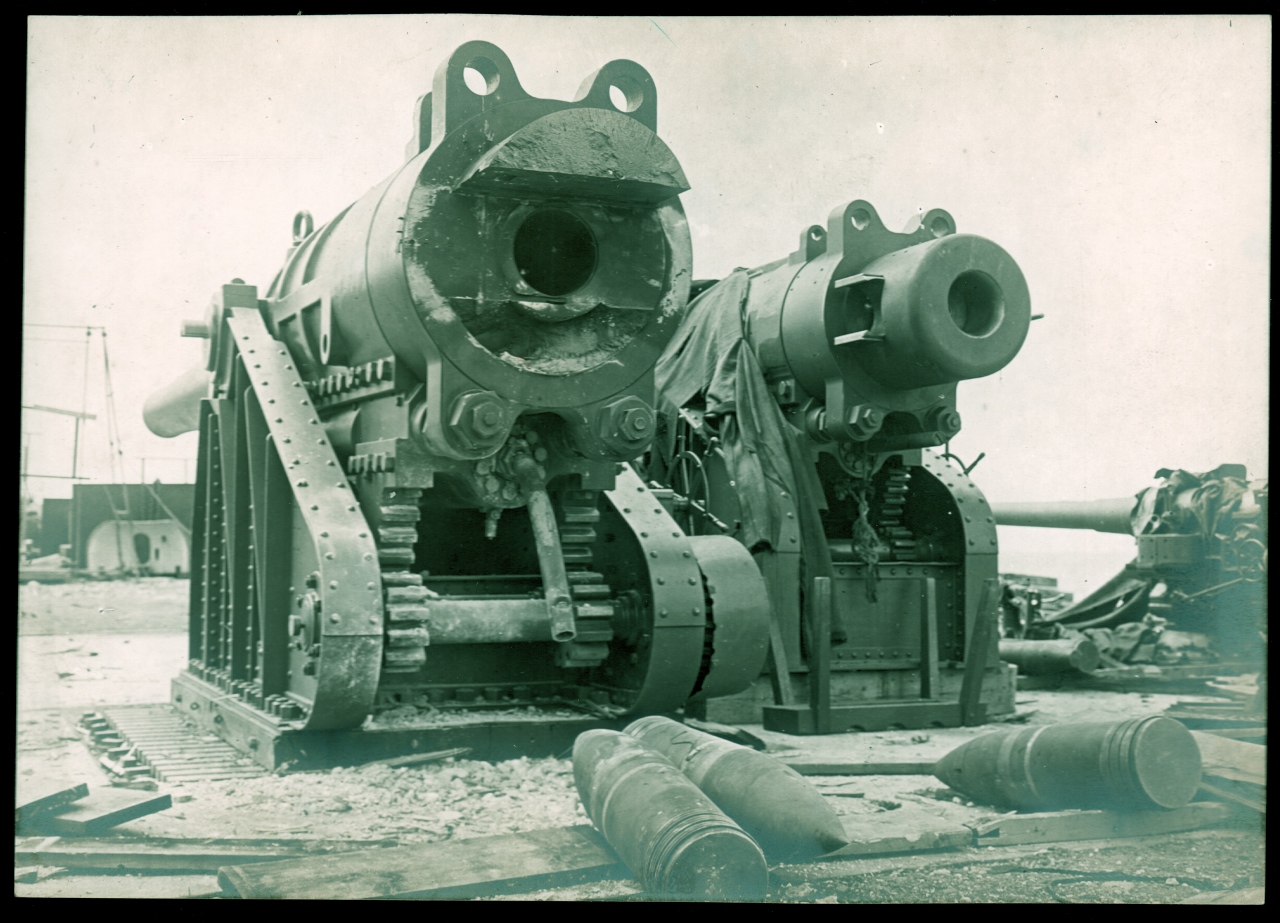
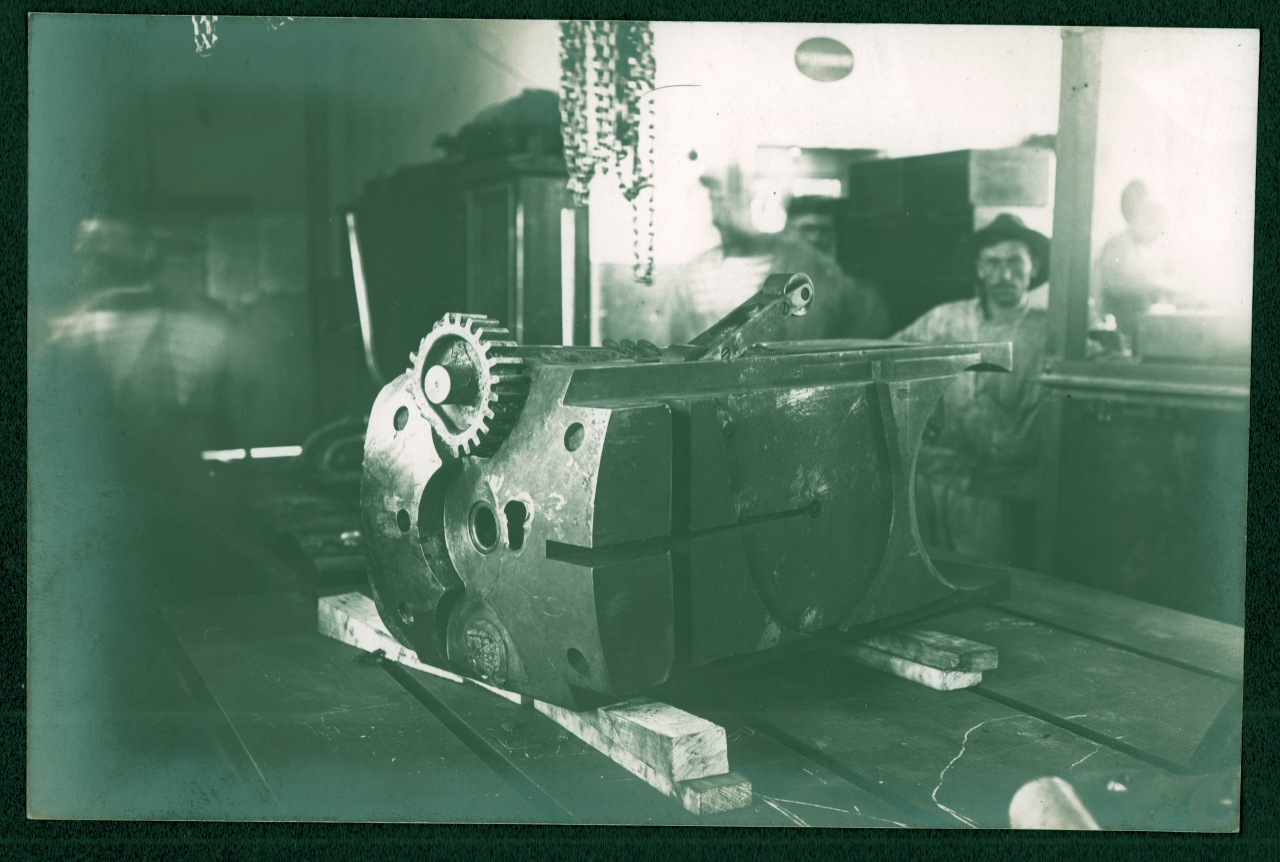
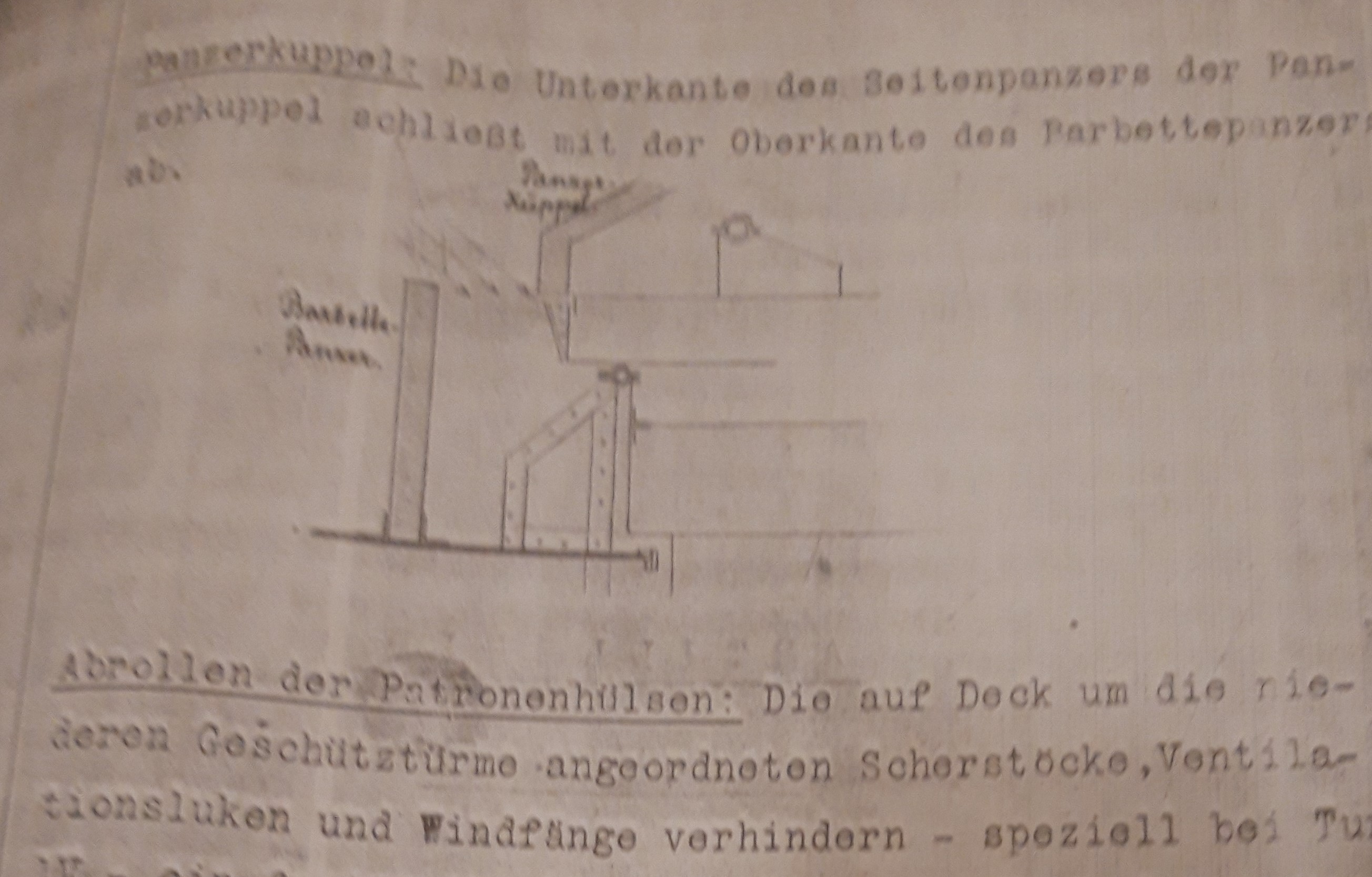
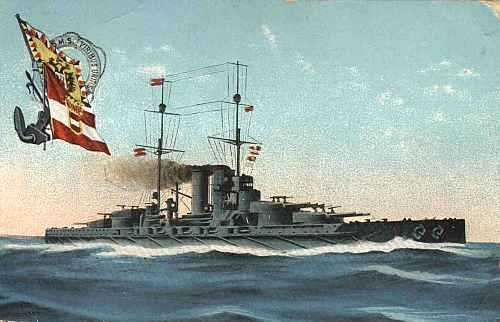
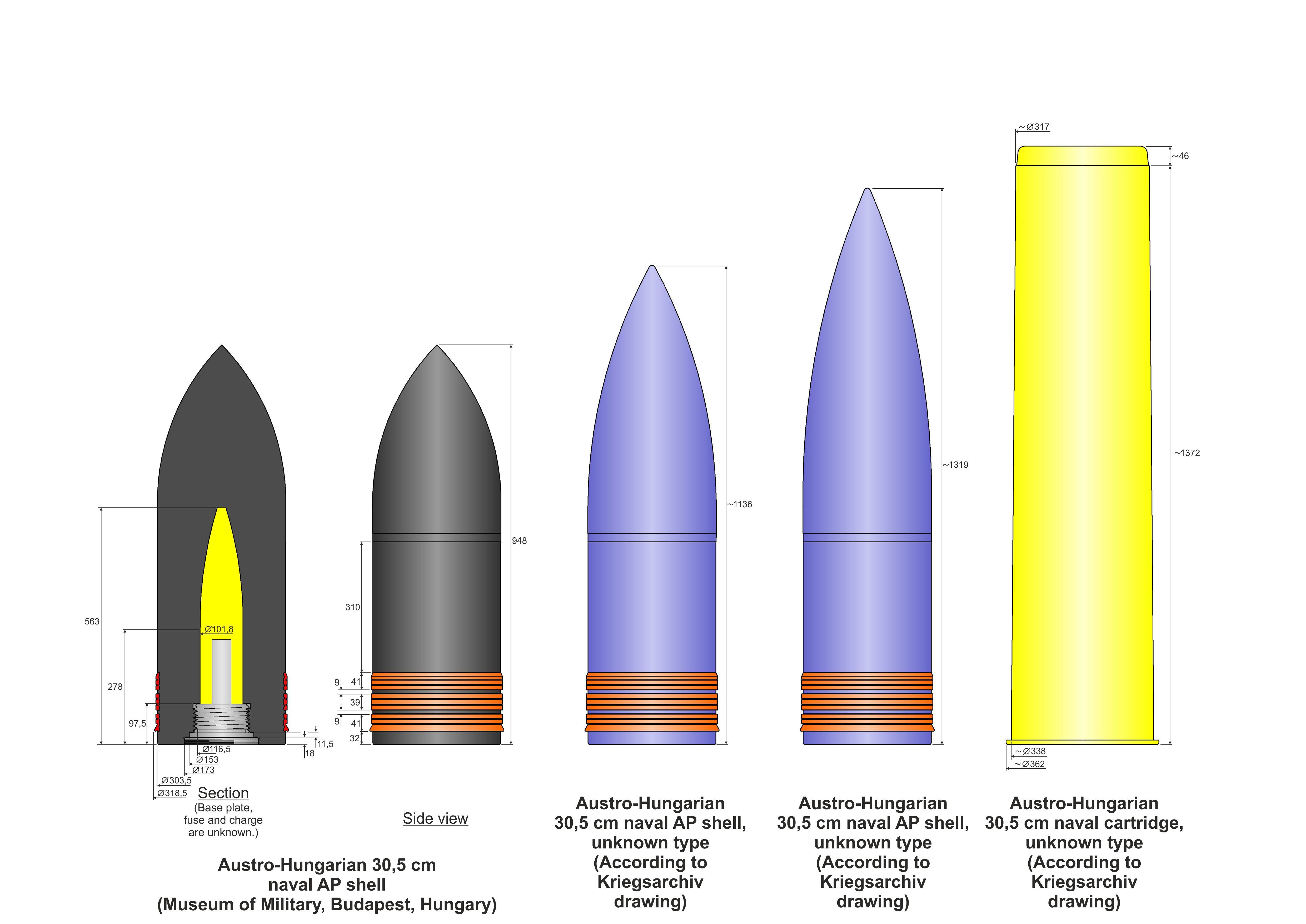
1) Cross-sectional view of 30.5 cm projectile body used for Panzergranate projectiles
2) Exterior view of 30.5 cm projectile body
3) 30.5 cm Panzergranate w/5crh ballistic cap
4) 30.5 cm Zündergranate w/5crh ballistic cap
5) 30.5 cm Cartridge.
Sketch copyrighted by András Hatala and used here by his kind permission.
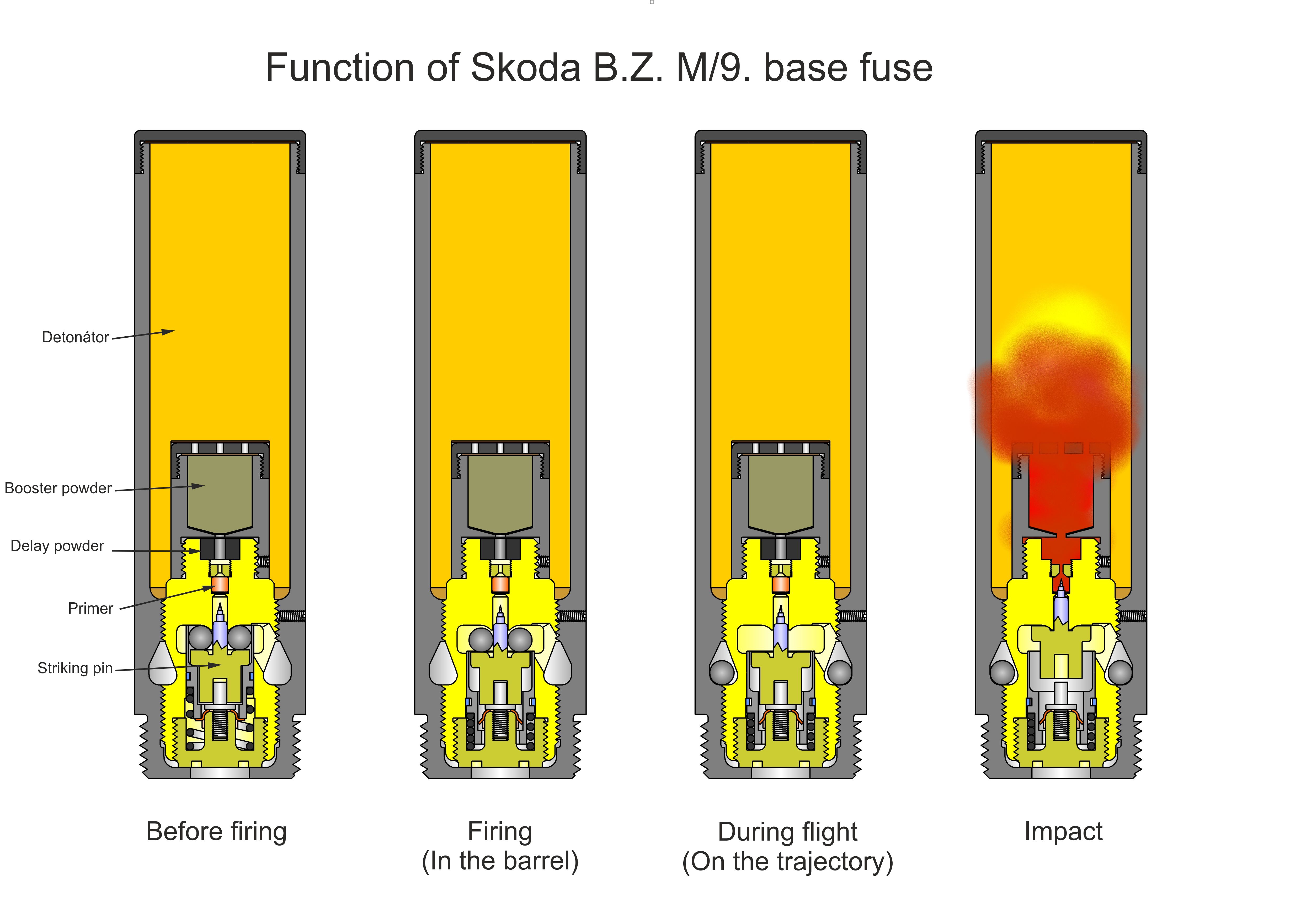
"Naval Weapons of World War Two" by John Campbell
"Naval Weapons of World War One" by Norman Friedman
"The Big Gun: Battleship Main Armament 1860-1945" by Peter Hodges
"The Viribus Unitis Class" article in "Warship Volume II" and "A's and A's" comments in "Warship Volume III" both by Friedrich Prasky
"A Szent István Csatahajó" [The battleship Szent István] by Balogh Tamás and Csepregi Oszkár
---
"Entwickelung des Schieß - und Artilleriewesens der k. u. k. Kriegsmarine in den letzten Jahren" [Development of the firing and artillery system of the k. u. k. Kriegsmarine in recent years] by kuk Marinetechnische Komitee (ca. 1912)
"Unterricht für die 30.5 cm und 24 cm Geschütz-türme - S.M. Schiffe Typ "Radetzky" (Genehmigt mit Eriaß P. K./M. S. Mr. 4243 ex 1912.) by Marinesektion, Pola 1912
[Information for the 30.5 cm and 24 cm gun turrets on the S.M. Ship Type 'Radetzky']
---
Original research by Mihály Krámli, author of "A Használhatatlan Lövegtornony Mítosza: Legenda Vagy Valóság?" [The Myth of the Useless Turret: Legend or Reality?] and
"Az Osztrák-Magyar Monarchia Csatahajói: 1904-1914" [Austro-Hungarian Battleships and Battleship Designs: 1904-1914]
{Link - Hungarian to complete book in pdf form and Link - English}.
Paperback copies printed on A4 paper and shipped from Hungary are available. Contact NavWeaps by clicking on the Contact link above or below.
---
MNL OL (Magyar Nemzeti Levéltár Országos Levéltára) [Hungarian National Archives in Budapest] Z402 carton 9 294 "Witkowitzer Bergbau ügy Panzergranatokra vonatkozólag" [Witkowitzer Bergbau case, concerning Panzergrenades]
---
Special help from Daniel Papp, András Hatala and Marco Zelaschi (author of "Le Navi da Battaglia Austo-Ungariche neela Guerra Mondiale: 1914-1918")
27 November 2007 - Benchmark
18 July 2010 - Updated with information supplied by Mihály Krámli
12 October 2013 - Added pictures of Radetzky turret and cartridge being rammed
01 May 2014 - Added additional gun, ammunition and mounting information, new range and armor penetration tables
20 November 2018 - Converted to HTML 5 format, reorganized notes, added propellant weight for non-K10 guns, added
turret weights, added photograph of damaged guns
19 March 2019 - Added photographs of breech from exploded gun and Radetzky
07 April 2020 - Added ammunition data per research by Mihály Krámli and sketches by András Hatala
11 May 2020 - Modified note regarding turret oxygen supply, added sketch of gap between gunhouse and barbette
17 July 2020 - Corrected typographical error and added link to Mihály Krámli book
24 August 2020 - Updated propellant weight for K10
15 April 2021 - Added photographs of sailors loading 30.5 cm projectiles and SAP projectile
11 June 2021 - Minor edits
04 October 2021 - Added link to Mihály Krámli A-H Battleship book in English
14 October 2022 - Changed link about turret ventilation to point at History and Technology essay
12 April 2023 - Corrected descriptions of APC projectiles based upon new information from Mihály Krámli,
added additional data to armor penetration tables, added photograph of Zrínyi
28 June 2023 - Added photograph of incomplete 30.5 cm APC at the Military History Institute and Museum, Budapest
20 February 2024 - Added ammunition details and updated caption of museum shell photograph
01 July 2024 - Changed link to point to new 7 cm/45 datapage
07 November 2024 - Added photograph and information about the Zündergranate (SAPCBC)

